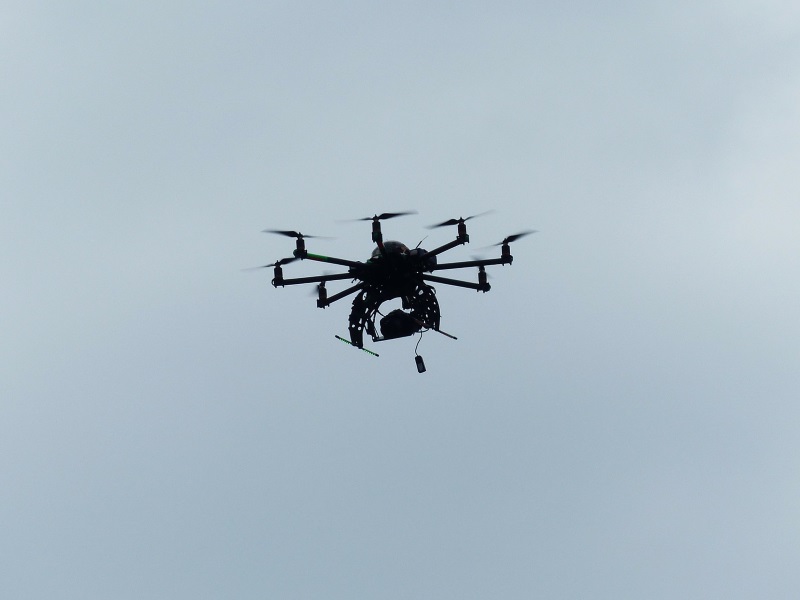- Home
- Science
- Science News
- Drones Could Cut Vaccine Delivery Costs: Bruce Lee
Drones Could Cut Vaccine Delivery Costs: Bruce Lee

The cost savings would come from drones being able to deliver vaccines more quickly and cheaply than land-based methods limited by road conditions and the need for costly fuel and maintenance, the researchers noted.
"Many low- and middle-income countries are struggling to get lifesaving vaccines to people to keep them from getting sick or dying from preventable diseases," said senior author Bruce Lee, Associate Professor at Johns Hopkins Bloomberg School of Public Health in Baltimore, Maryland, US.
"You make all these vaccines but they're of no value if we don't get them to the people who need them. So, there is an urgent need to find new, cost-effective ways to do this," he noted.
Non-vaccine costs of routine immunizations are expected to rise by 80 percent between 2010 and 2020, with more than one-third of costs attributable to supply chain logistics.
Supply chain inefficiencies can mean that many vaccines don't even reach the people who need them.
For their study, Lee and his colleagues created a HERMES computer model to simulate a traditional land-based transportation system - a combination of trucks, motorbikes and public transit - and compared it with an unmanned drone system for delivering vaccines as part of an immunisation programme.
Seattle-based non-governmental organization Village Reach helped provide data for the model.
They varied characteristics such as geography, population, road conditions and vaccine schedule in order to assess which conditions would most contribute to drones offering the biggest cost savings.
They found that using drones to get vaccines to the last stop on their journey - vaccination locations - could slightly improve vaccine availability - potentially immunizing 96 per cent of the target population as compared to 94 percent using land-based transport - while producing roughly 20 per cent savings.
The study was published in the journal Vaccine.
Drones are currently being tested for medical supply deliveries in rural Virginia, Bhutan and Papua New Guinea, a Johns Hopkins School of Public Health statement said.
UNICEF is testing the feasibility of using them to transport lab samples in Malawi. And in Tanzania, there are efforts afoot to transport blood and essential medications, the statement added.
Catch the latest from the Consumer Electronics Show on Gadgets 360, at our CES 2026 hub.
Related Stories
- Samsung Galaxy Unpacked 2025
- ChatGPT
- Redmi Note 14 Pro+
- iPhone 16
- Apple Vision Pro
- Oneplus 12
- OnePlus Nord CE 3 Lite 5G
- iPhone 13
- Xiaomi 14 Pro
- Oppo Find N3
- Tecno Spark Go (2023)
- Realme V30
- Best Phones Under 25000
- Samsung Galaxy S24 Series
- Cryptocurrency
- iQoo 12
- Samsung Galaxy S24 Ultra
- Giottus
- Samsung Galaxy Z Flip 5
- Apple 'Scary Fast'
- Housefull 5
- GoPro Hero 12 Black Review
- Invincible Season 2
- JioGlass
- HD Ready TV
- Laptop Under 50000
- Smartwatch Under 10000
- Latest Mobile Phones
- Compare Phones
- OPPO Reno 15 Pro Max
- Honor Win RT
- Honor Win
- Xiaomi 17 Ultra Leica Edition
- Xiaomi 17 Ultra
- Huawei Nova 15
- Huawei Nova 15 Pro
- Huawei Nova 15 Ultra
- Asus ProArt P16
- MacBook Pro 14-inch (M5, 2025)
- OPPO Pad Air 5
- Huawei MatePad 11.5 (2026)
- Xiaomi Watch 5
- Huawei Watch 10th Anniversary Edition
- Acerpure Nitro Z Series 100-inch QLED TV
- Samsung 43 Inch LED Ultra HD (4K) Smart TV (UA43UE81AFULXL)
- Asus ROG Ally
- Nintendo Switch Lite
- Haier 1.6 Ton 5 Star Inverter Split AC (HSU19G-MZAID5BN-INV)
- Haier 1.6 Ton 5 Star Inverter Split AC (HSU19G-MZAIM5BN-INV)

















